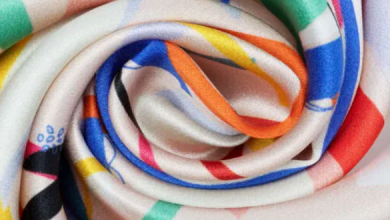The Integration of High-Performance Fibers in Modern Apparel: Trends and Sustainability

Key Takeaways:
- High-performance fibers are essential for modern apparel, offering enhanced properties like durability, comfort, and functionality.
- Technological innovations are allowing for the creation of sustainable and advanced textiles.
- Eco-conscious practices are increasingly important in the production of performance fabrics.
- The market for high-performance apparel is expanding, driven by consumer demand and innovative applications.
- Understanding consumer demands and ethical considerations is crucial for the future of high-performance textiles.
High-performance fibers are revolutionizing modern apparel by enhancing durability and comfort. These advanced materials also drive sustainability in the fashion industry through improved recyclability and reduced environmental impact. Trends show a growing adoption of these fibers in various clothing sectors, reflecting a commitment to innovation and eco-consciousness.
Understanding High-Performance Fibers and Their Role in Fashion
The term ‘high-performance fibers’ has become synonymous with cutting-edge fashion and the modern apparel industry. These marvels of material science are engineered to deliver unmatched functionality, whether in terms of stretch, water resistance, or temperature management. However, their significance extends beyond mere performance; these fibers symbolize a commitment to meeting the multifaceted demands of today’s consumers. As the fashion industry continues to evolve, the relevance of high-performance fibers becomes more profound, with fabric wholesalers increasingly curating collections that boast these advanced materials. Standout attributes, such as durability against wear and tear, quick-drying capabilities, and enhanced comfort, translate into real-world benefits for end-users.
Initially reserved for specialized applications like space suits and protective military gear, these technologically sophisticated textiles have now gone mainstream, broadening the horizons of everyday fashion. The notion of ‘smart clothing’ is no longer relegated to science fiction; it is a reality shaping the future of how we dress for both function and style. Leading the way in this textile revolution are fabrics like LYCRA®, which have revitalized the industry with their dynamic combination of flexibility and retention, paving the way for garments that support an adventurous and vigorous lifestyle while retaining aesthetic appeal.
Innovations in High-Performance Fiber Technology
The textile industry is experiencing a technological renaissance, and high-performance fibers are at its heart. The last decade has seen a surge in the development of fibers that can withstand extreme conditions and provide long-lasting durability. Thanks to relentless innovation and a competitive marketplace, the range of applications for these fabrics has expanded far beyond traditional uses. For instance, waterproof and UV-resistant materials are now featured in everyday attire, offering protection and comfort that was once exclusive to specialty gear.
This wave of innovation isn’t just about creating more robust and resilient materials and making them more intelligent. Fabrics embedded with electronic sensors that can monitor health and environmental conditions are soon becoming integral to our wardrobes. As a result, clothing increasingly interacts with us, becoming a platform that covers, communicates, and collaborates with our bodies.
The Shift Toward Sustainable High-Performance Textiles
The demand for sustainable garments has never been higher, and the textile industry responds by delivering high-performance materials with a minimal environmental footprint. Sustainable sourcing and manufacturing practices are integrated into producing fibers essential for modern apparel. Creating environmentally friendly fibers that consume less energy and water, ultimately leading to a more sustainable ecology, is one such endeavor that Textile World highlights. Such practices are about complying with regulatory standards and building consumer trust and loyalty in a market that values ethical stewardship over the environment.
In an industry once notorious for its heavy environmental toll, the push towards eco-consciousness is being felt at every level. From research labs focused on biodegradable fibers to brands adopting zero-waste policies, sustainability is becoming synonymous with innovation in textiles. Companies that adopt these practices are differentiating themselves and positioning themselves as leaders in the new age of apparel production.
Current Trends in Performance Apparel
The landscape of performance apparel is shifting, with consumers demanding more from their clothing than ever before. Athletic wear that doubles as casual wear is at the forefront of this trend, blurring the lines between the gym and the coffee shop. These garments, characterized by their use of high-performance fibers, are lauded for their versatility and intelligent design, catering to a lifestyle that doesn’t compromise functionality or fashion.
Brands that keep a pulse on this trend are reaping the rewards, witnessing a surge in customer loyalty and market share. Consumers are gravitating towards clothing that supports a wellness-oriented lifestyle that accommodates the rigors of a workout session and the style nuances of social engagement. This fusion of high-performance fibers and contemporary style sets the tone for future fashion endeavors.
The Role of High-Performance Fibers in Athletic Performance
Athletic apparel has seen a remarkable transformation, largely thanks to the incorporation of high-performance fibers. These materials have emerged as integral components in sportswear, offering tangible benefits like improved muscular support and enhanced moisture management. These advancements enable athletes to perform at their best, minimizing distractions from discomfort and maximizing the advantages provided by their gear.
Moreover, designers are tapping into the psychological effects of performance wear. When athletes feel confident in their attire, it can provide a mental edge that complements their physical preparedness. The result is clothing that not only aids in performance but also bolsters the wearer’s sense of self, proving that suitable textiles can make a world of difference in competitive scenarios.
Meeting Consumer Demands With Functional Wearables
The modern consumer seeks more than just aesthetics from their clothing; they are looking for items that offer a practicality that matches their active, on-the-go lifestyle. This desire for functional wearables has steered the textile industry towards high-performance fibers capable of delivering on these expectations. Apparel today must withstand various elements, endure rigorous activities, and maintain a level of comfort and style that aligns with personal fashion sensibilities.
The industry is exploring textiles that can adapt to different body shapes, regulate temperature based on surrounding environments, and even resist stains, embodying the concept of “smart fashion.” These are not just fads but expectations set by a discerning public, shaping the fabric of future apparel literally and figuratively.
The Economic Perspective: High-Performance Fabrics Market Outlook
The global market for high-performance fabrics presents a landscape of opportunity. Economic forecasts paint a promising picture, with an expected uptake in demand for innovative fabrics. The analysis outlined in ScienceDirect provides insights into the ever-growing appetite for intelligent textiles embodying utility, longevity, and sustainability. The entry of developing economies into the market also creates fresh avenues for growth and diversification.
This burgeoning sector isn’t just growing; it’s evolving. As consumer preferences shift and new applications emerge, the textiles industry must stay agile, anticipating market trends and developing products that resonate with a diverse clientele. This dynamism ensures ongoing innovation and steady value creation within the marketplace.
Ethical Considerations and Social Responsibility
The success of high-performance textiles is not measured solely by their technical merits but also by the ethical practices behind their production. The contemporary consumer pays heed to the origins of their apparel, seeking reassurance that their purchases align with their principles of fairness and ecological preservation. Brands that prioritize ethical sourcing and transparency in their supply chains are finding a more engaged and loyal audience that values the product and the company’s ethos behind it.
This trend towards social responsibility indicates a broader shift in consumer behavior, where ethical considerations shape purchasing decisions. Manufacturers who embrace these values and communicate their commitments effectively set new standards in the industry, fostering a culture of ethical consumption reverberating through the supply chain.
Adapting to Climate Change with Advanced Textiles
As the effects of climate change become increasingly tangible, textiles play a crucial role in fostering resilience within communities. High-performance fibers are engineered to withstand harsh environmental conditions, making them suitable for protective clothing in extreme climates. This proactive approach to textile development not only answers immediate practical needs but also demonstrates an industry-wide acknowledgment of the more considerable ecological challenges that lie ahead.
By investing in research and development of climate-responsive fabrics, the industry is taking a proactive stance on climate action. Developing textiles that can adapt to fluctuating temperatures and weather patterns is just one example of how the apparel sector contributes to broader sustainability goals, delivering products that serve the consumer and protect the environment.




